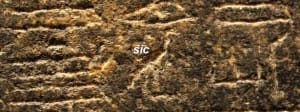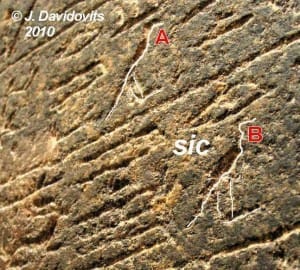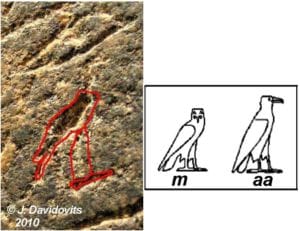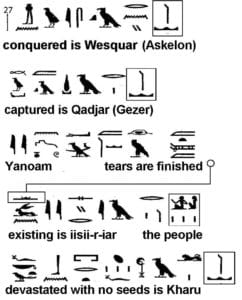Taken from:
http://www.touregypt.net/featurestories/ramesses2intro.htm
....
This is the first part of a series of articles on
Ramesses II, perhaps even better known as Ramesses the Great, the third ruler of Egypt's 19th Dynasty during the prosperous New Kingdom. Future parts of this series will explore this great Egyptian Pharaoh as a builder, husband and father, military leader and deity, among other topics. While Ramesses II was certainly not a typical Egyptian pharaoh, far various reasons we know a great deal about him, and exploring his life in detail should provide readers with a better understanding of all the rulers of ancient Egypt.
In his book, "Chronicle of the Pharaohs" by Peter A. Clayton, he sums up Ramesses II very nicely, stating that:
"During his long reign of 67 years, everything was done on a grand scale. No other pharaoh constructed so many temples or erected so many colossal statues and obelisks. No other pharaoh sired so many children. Ramesses' 'victory' over the Hittities at Kadesh was celebrated in one of the most repeated Egyptian texts ever put on record. By the time he died, aged more than 90, he had set his stamp indelibly on the face of Egypt."
Ramesses II's father was
Seti (Sethos) I and his mother was Tuya. Tuya was not one of Seti I's major wives, and therefore Ramesses II was probably not given the training of a king from an early age (or as Ramesses II states, "from the egg"). However, he did serve as a co-regent with his father prior to Seti I's death.
We believe that Ramesses II had as many as fifty sons and fifty daughters, though only a few of them are known to us. His chief, and most likely favorite wife was
Nefertari, though he obviously had many others. We believe he was succeeded by a son named
Merneptah who was an old man himself by the time he ascended the throne.
It is difficult to tell from most of Ramesses II's statues and depictions on monuments exactly what he looked like physically. This is because the ancient Egyptian artists were not always intend on portraying the king in a totally realistic manner. The king probably never set for specific statues. Rather, they were based upon approved models.
Hence, the official image of Ramesses II promoted by the royal artists is not unlike the ageless portraits we find of the British monarch on stamps or American presidents on currency. His images depict him as a traditional king: tall, dignified, physically perfect and forever young, which prompted one modern scholar to comment that:
"
Now Ramesses the Great, if he was as much like his portraits as his portraits are like each other, must have been one of the most handsomest men, not only of his day, but of all history."
His many statues and reliefs show his physical characteristics to include a prominent nose set in a rounded face with high cheek bones, wide, arched eyebrows, slightly bulging, almond-shaped eyes, fleshy lips and a small, square chin. He is often portrayed with a regal smile.
Of course, we have a better idea of his looks as an old man from his mummy, which has a very prominent, long, thin, hooked nose set in a long, narrow, oval face with a strong jaw. He was large for an ancient Egyptian, standing some five foot seven inches (1.333 meters) tall, and it has been suggested that he shows many Asiatic traits, which might also be recognizable in the mummies of Seti I and Merenptah.
Interestingly, the mummy's gray hair had been died red, and indeed, modern technology has proven that in his youth he was a red head, which was also not a common trait of ancient Egyptians.
Due to a fortunate combination of circumstances, including optimal
Nile floods resulting in good harvests, international stability, a large family and of course, the extraordinary longevity which caused Ramesses to outlive not only his contemporaries, but many of his children and grandchildren, Egypt enjoyed a continuity of government that was the envy of the ancient world. Whether by luck, or good kingship, Egypt flourished under Ramesses II and her people were grateful.
Within his lifetime, Ramesses II was venerated as a god, particularly in
Nubia. This cult following continued to flourish, even after the end of Egypt's pharaonic period. Unlike many Egyptian kings, who always sought to have their name remembered and repeated so that their soul could live on, the Egyptians continued to make pilgrimages to
Abydos,
Memphis,
Tanis and
Abu Simbel in order to make offerings to Ramesses the deity for centuries after his death. During the
Graeco-
Roman period, in order to elevate the status of a god named Khons, the priests literally rewrote their mythology to allow Ramesses II a starring role alongside the deity.
Ramesses II's reputation resulted in an amazing following, and even a period of Egyptian history we often refer to as the Ramesside period. During the
20th Dynasty, though not descendents, all but one of the kings took the name Ramesses in their efforts to emulate him. Unfortunately, only one of the kings,
Ramesses III, would come anywhere close to Ramesses II's achievements, and in the end, this much weakened era would spell the end of the New Kingdom. Later still, the weak dynasty of Tanite kings who only had a tenuous grip on Upper Egypt also attempted to recapture some of the lost brilliance of Egypt's golden age by choosing to use Ramesses II's throne name, Usermaatre, as their own.
Hence, Ramesses II's name lived on. In 1822, when we first began to decipher the ancient Egyptian language, many new pharaohs became known to us, and later, as new tombs were discovered, along with other documents, we began to piece together a long line of rulers. Only then did we know the names of Egyptian kings and queens such as
Hatshepsut,
Akhenaten and
Tutankhamun. However, Ramesses II was never in need of rediscovery, for his name, perhaps corrupted somewhat, was not forgotten.
Even in our modern world, he has also been remembered, though often not very realistically. He was the handsome, courageous and good hearted king of Christian Jacq's Egyptian novels, and a more lonely, complicated man in Anne Rice's "The Mummy". On the silver screen, he was introduced in the 1909 film, "Mummy of the King Ramses, and in 1923, became the great pharaoh of Cecil B DeMille's silent screen epic, "The Ten Commandments". Afterwards, Yul Brynner would become Ramesses in DeMille's more famous 1956 movie by the same name, and just recently, he was not very accurately portrayed in the DreamWorks animated interpretation of the Exodus called the "Prince of Egypt".
The great king was given the birth name of his grandfather, Re-mise, or Ramesses I (meryamun), which means, "
Re has Fashioned Him, Beloved of
Amun". We often find his birth name spelled as Ramses. His throne name was Usermaatre Setepenre, meaning, "The Justice of Re is Powerful, Chosen of Re".
We may find many variations of his name throughout classical history. Ramesses fame was not limited to Egypt, for he was known throughout the ancient classical world, due perhaps to a highly efficient royal propaganda machine. From the Christian bible we hear of both Ramesses, as well as his capital city of
Pi-Ramesses. Manetho, a famous ancient Egyptian historian, included Ramesses II in his Egyptian chronology as Ramesses Miamun, or Rapsakes. The Greek historian,
Herodotus, refers to him as King Rhampsinitus. Writing in 60 BC, Diodorus Siculus, who was especially impressed by the monument we today call the
Ramesseum, the mortuary temple of Ramesses II on the
West Bank at
Thebes, knew him as Ozymandias, which is an obvious corruption of the king's pre-noimen, Usermaatre. Pliny and Tacitus would later write about him, calling him King Rhamsesis or Rhamses, and two thousand years later, in 1817, Percy Bysshe Shelley published Ozymandias, a poem giving his impression of the once mighty Ramesses:
I met a traveller from an antique land
Who said: Two vast and trunkless legs of stone
Stand in the desert. Near them, on the sand,
Half sunk, a shattered visage lies, whose frown,
And Wrinkled lip, and sneer of cold command
Tell that its sculptor well those passions read
Which yet survive, stamped on these lifeless things,
The hand that mocked them, and the heart that fed:
And on the pedestal these words appear: "My name is Ozymandias,
king of kings: Look on my works, ye mighty, and despair!"
Nothing besides remains. Round the decay
Of that colossal wreck, boundless and bare
The lone and level sands stretch far away.
In fact, prior to our modern discipline of Egyptology, the Pharaoh Ramesses II became legendary becoming a fabled king not unlike England's (Celtic) King Arthur. Like that king, an ill defined combination of real kings grew about his person, combining perhaps the deeds of the
12th Dynasty Kings
Senusret I and
III with those of Ramesses II under the general umbrella of Sesothes.
Yet, it was not until after
Jean Francois Champollion decoded the
Hieroglyphics of the Rosetta Stone that the immensity of Ramesses II's monumental building works could be appreciated by modern observers. Now, the real king became famous all over again, and not only among Egyptologists, though they certainly began to study Ramesses the Great with a new fervor. Because of the number of his monuments, he seems to have constantly been in the news, as discovery after discovery turned up bearing his name.
Early on, he received considerable bad press from scholars. For example, Bansen regarded him as:
"...an unbridled despot, who took advantage of a reign of almost unparalleled length, and of the acquisitions of his father and ancestors, in order to torment his own subjects and strangers to the utmost of his power."
Even in 1959, William C. Hayes said that he was:
"a brash young man...not overburdened with intelligence and singularly lacking in taste... [yet with] tremendous energy and personal magnetism."
Others only gave him slightly better marks.
Miss Amelia B. Edwards, in her travel guide, "A Thousand Miles up the Nile", that:
"...it is safe to conclude that he was neither better nor worse than the general run of Oriental despots - that he was ruthless in war, prodigal in peace, rapacious in booty, and unsparing in the exercise of almost boundless power. Such pride and such despotism were, however, in strict accordance with immemorial precedent, and with the temper of the age in which he lived."
Essentially, Kenneth Kitchen, a more modern observer, seems to back Edwards comments, saying that:
"
The deeds and attitudes of a Ramesses II cannot just be crudely measured-off against our own supposed social values, as simply boastful or megalomania; they must be compared with what were the norms and ideas in his culture, not ours."
Modern thought on Ramesses undulates from scholar to scholar, and depending on what role is discussed. However, somewhat of a consensus among
Egyptologists seems to be that Ramesses II simply did what Egyptian pharaohs were suppose to do, though he had a longer period of time than average to do so. Essentially, Ramesses II is believed to have been a very traditional king in many respects, who followed in the footsteps of his predecessors.
Ideally, an Egyptian pharaoh was simply a link in a long chain of custodians who's ill defined but well understood role passed from king to king. He was the mortal link with the gods upon who's shoulders rested the responsibility of maintaining
Ma'at in Egypt, and to some extent throughout the known world. Ma'at might be defined as "truth", but might be better explained as a continuity of "rightness" which could insure that things would continue to function normally. If Ma'at were in balance, there would be reasonable
Nile inundations (floods) which would nourish the soil and produce good harvests, victory in battle and there would not be illness in the land. Ma'at was mostly obtained by pleasing the gods, which involved supporting their cults as well as following a righteous path. And among other requirements such as making offerings, participating in festivals and protecting the sacred land of Egypt, pleasing the gods often involved building temples and supporting their priesthood.
Of course, there would be little need for a king to actually promote himself in order to fulfill these duties. Yet, despite the belief by the ancient Egyptians that the King was at least semi-divine, they were, as we now know, all too human. Almost every Egyptian pharaoh seems to have felt a need to prove himself to his people (as well as to the gods). In fact, they wanted to prove themselves superior to their predecessors, and yet, at the same time, many of these kings actually suffered considerable self doubt, particularly when they were not born to a long dynasty of kings and also not to a "Great Wife" of the king, as was the case with Ramesses II.

Therefore, they exerted considerable efforts to build monuments and grand statues in order to re-enforce their role as a living god, as well as to defeat the enemies of Egypt in battle and in each case, they ensured that their name and titles were celebrated in connection with these deeds. Furthermore, they often exaggerated every possible deed, even to the point of fabricating war victories and usurping the monuments and statues of their predecessors.
Ramesses II was not the first, nor the last to follow such practices. He was certainly an avid builder, erecting temples and statues from one end of the Nile Valley to the other. And even when he may have failed in war, he nevertheless made it a victory by inscribing it as such on his monuments.
So in reality, regardless of our modern misgivings about Ramesses II, as a king of Egypt's New Kingdom, Ramesses fulfilled his functions, as he was basically expected to, and in return, Ma'at seems, at least to his ancient Egyptian subjects, to have been fulfilled, for the country experienced a long period of prosperity during his equally long reign.
Major Sections on Ramesses II
Main Ramesses II Page
Ramesses II: Anatomy of a Pharaoh - His Family (Specifically, his Women)
Ramesses II: Anatomy of a Pharaoh - His Family (Specifically, his Children)
Ramesses II: Anatomy of a Pharaoh - The Military Leader
See also:
Amun-her-shepeshef, First Son of Ramesses II
The Bentrech Stele
Leading up to the Battle of Kadesh:The Battle of Kadesh, Part I
The Actual Battle of Kadesh:The Battle of Kadesh Part II
Egyptian Account of the Battle of Kadesh
Nefertari, Tomb of - Valley of the Queens
Qantir, Ancient Pi-Ramesse
The Queens of Ramesses II
The First Peace Treaty in History
The Peace Treaty Document
The Sons (and Daughters) of Ramesses II
References:
| Title | Author | Date | Publisher | Reference Number |
| Atlas of Ancient Egypt | Baines, John; Malek, Jaromir | 1980 | Les Livres De France | None Stated |
| Dictionary of Ancient Egypt, The | Shaw, Ian; Nicholson, Paul | 1995 | Harry N. Abrams, Inc., Publishers | ISBN 0-8109-3225-3 |
| History of Ancient Egypt, A | Grimal, Nicolas | 1988 | Blackwell | None Stated |
| Monarchs of the Nile | Dodson, Aidan | 1995 | Rubicon Press | ISBN 0-948695-20-x |
| Oxford History of Ancient Egypt, The | Shaw, Ian | 2000 | Oxford University Press | ISBN 0-19-815034-2 |
| Ramesses: Egypt's Greatest Pharaoh | Tyldesley, Joyce | 2000 | Penguin Books | ISBN Not Listed |
| Ramesses II: Greatest of the Pharaohs | Menu, Bernadette | 1999 | Harry N. Abrams, Inc. | ISBN 0-8109-2870-1 (pbk.) |
| alley of the Kings | Weeks, Kent R. | 2001 | Friedman/Fairfax | ISBN 1-5866-3295-7 |
| Who Were the Pharaohs? (A history of their names with a list of cartouches) | Quirke, Stephen | 1990 | Dover Publications | ISBN 0-486-26586-2 |
Read more:
http://www.touregypt.net/featurestories/ramesses2intro.htm#ixzz2afotzsTv


















